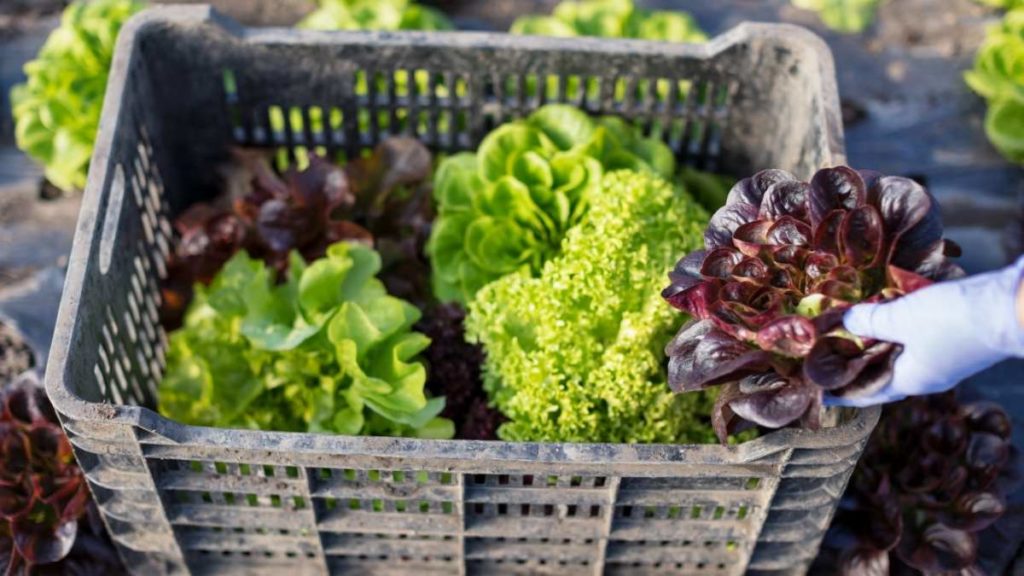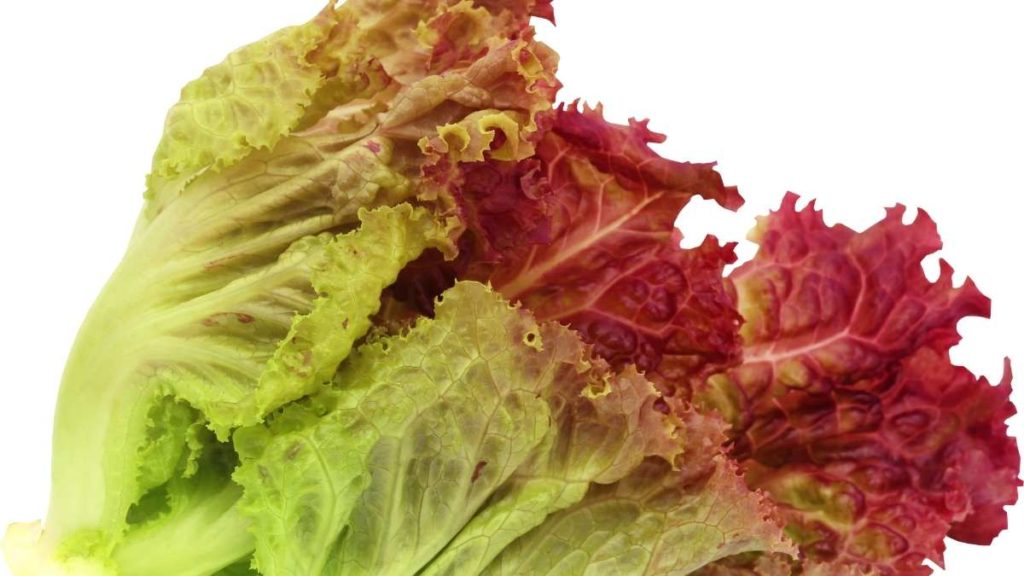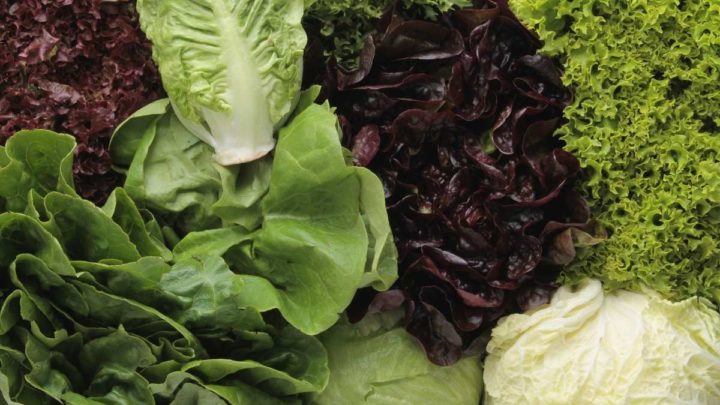Does Lettuce Go Bad?
Lettuce is a green leafy vegetable and perishable food. It is highly consumed by many because of its high vitamins, minerals, and water content even just by eating it raw. And since it is a perishable food, it has a relatively short life and is more fragile than other vegetables out there, especially shredded lettuce. How Do You Know If Lettuce Is Bad and how long does lettuce last before it is spoiled.
There are a lot of factors that affect its shelf life such as the storage and date purchased. In this article, we will cover types of lettuce leaf and lettuce plant.
Plus answer
How long does lettuce last and how can you tell if it is bad?
Lettuce will last up to a week in the fridge and look for slimy soggy leaves to tell it is bad.
How to Tell If Lettuce Has Gone Bad (Signs of a Bad Lettuce)
There are five easy signs to check, such as:
1. Fuzzy leaves (spoiled leaves)
The first common sign of spoiled lettuce is losing the leave’s vibrant color. It usually has brown, gray, or black leaves. However, lettuce comes in several varieties, thus it also varies when it rots. Iceberg lettuce, butter lettuce, and Romaine lettuce come in yellow to light green in color, while Radicchio lettuce has light to dark purple leaves. A combination of purple and green on the leaves is what you call Red Coral lettuce. As such, you have to know the original outer leaves’ color before determining is it now an old lettuce the leaves are off-color.
Usually, fresh lettuces have a crispy and firm texture without any sign of discoloration.
2. Brown spots and bruised areas of leaves
brown spots or black spots on outer leaves mostly taste bad. So if your lettuce happens to have one, just simply cut out those affected parts and eat the rest of it. It is completely safe. Bruised or brown spots happen if the lettuce is stored for a long time already or is not properly handled.
3. Soft, slimy, or mushy leaves
As mentioned, lettuce has crispy and firm leaves. So if it starts to get rotten, the leaves will change into soft, slimy, and soggy. Purchasing lettuce that is already washed, cleaned, and not dried properly will give more tendency of losing its freshness and crispiness quickly – especially loose leaf lettuce.
If you see these said signs of bad lettuce, immediately discard them and consider if you consume the unaffected area. But if most of the leaves are rotten, we suggest you get rid of the whole head since it has more risks of giving food poisoning.
4. Yellowing on the outside of lettuce heads
Know that a lettuce head will last for a couple of days only. Lettuce heads stored in the fridge last for at least 10 days while the pre-cut lettuce lasts within 3 to 4 days. To get the best of its nutrients, make sure to check on the best-by date. Also, purchase a whole head of lettuce if you want it to last longer, especially if you do not plan to consume it immediately.
5. Poor quality lettuce with a bad taste and rancid smell
Fresh lettuce normally smells aromatic and kind of earthly. Lettuce does not usually smell bad even if it starts to get rot. But when it has a really rancid, stinky, or rotten smell, it is the clearest indication of rotten lettuce. To prevent this from happening, make sure to store your leafy veggie in a cool, well-ventilated place or inside the refrigerator.

How do you know if lettuce is bad 
Does Lettuce Go Bad
How Do You Keep Lettuce From Going Bad
Store lettuce in an air-tight container in the fridge to stop it from going bad.
How to store lettuce properly and how to tell if it has gone bad?
Lettuce Storage and Shelf Life
If you’re looking to extend shelf life even further, try storing your lettuce in the refrigerator crisper drawer instead of keeping it out with other vegetables. This will help maintain crispness and prevent mold from forming. If you do store your lettuce this way, make sure that there isn’t any air space between the bottom layer of greens and the top layer of produce so they don’t dry out.
Vegetables, including lettuce, are easy to store in order to have a longer shelf life. Proper storage will prevent harmful bacteria such as E-coli, so it is essential to always wash your vegetables before storing or consuming them. With that, follow these four tips on how to do it on your own:
1. Place in an airtight container.
To keep the original moisture and get rid of contaminants, make sure to place your lettuce in an airtight container or any airtight plastic bag. If you can buy a vegetable bag, then great! Lettuce bought in grocery stores usually has its original packaging, so better keep it that way. Meanwhile, the lettuce heads should be wrapped loosely with paper towels and put in a sealed bag for longer shelf life.
2. Keep it clean and dry.
Before placing it in a fridge make sure that it is well-cleaned and completely dried. In that way, you can keep its firmness for a longer time. Using a salad spinner in this drying is a great tool for this.
Romaine lettuce, as well as butterhead and looseleaf lettuce, are not completely dried when displayed in the supermarket. Hence, it rots quicker before you know it. So, make sure to remove as much water as you can and do it with a paper towel to remove the excess moisture before placing it in the fridge.
To safely do this, make sure to wash your hands for 20 seconds with soap and running water. Next, discard the rotten, torn, and bruised parts. And rinse the vegetable under running water with your hands to rub the surface of the leaves and head as gently as possible.
There is nothing worse than wilted lettuce.
3. Keep it in the fridge.
Now that you have dried and cleaned your lettuce, it is time to put it in the fridge, particularly in the vegetable crisper drawer. All lettuce needs to be refrigerated to keep its freshness longer. Do not store it in your pantry or out in the tabletop since it will elevate the risk of getting contaminated and will rot immediately.
4. Do not freeze.
Never dare to freeze your lettuce. Contrary to what others believe that it will prolong its freshness, it will not. Vegetables are not meat, hence they have different components and elements that do not go well with freezing. Specifically, lettuce has more excess moisture content and does not go well being frozen and consumed afterward.
The tips mentioned above are the best ways to follow proper food storage, especially for vegetables. It makes you healthier and cuts food costs by avoiding waste.
What Happens If You Eat Bad Lettuce
Unfortunately, if you eat bad lettuce, there is a high chance of getting sick or food poisoning. Leafy vegetables like lettuce are a major source of E. coli infections in humans. Common germs found in leafy green veggies are Cyclospora, Salmonella, and Listeria. And these germs can cause diarrhea, vomiting, stomach pain, fever, and nausea in the body.
As healthy as it is, fresh lettuce is very prone to harmful contaminants and germs. The Center for Disease Control and Prevention (CDC) stated these harmful germs cannot be easily taken away with just a simple washing since these tiny creatures can creep into the surfaces of leaves. So always was each individual lettuce leaf.
I can not tell you how many times I have found a small bug well inside the lettuce plant head.
How to Store Lettuce Properly
How to store a lettuce head – and have nice crisp lettuce for days – these methods work for any fresh lettuce like butter lettuce, garden lettuce, and even store bagged lettuce.

How to Store Lettuce to extend its shelf life?
It is possible to keep lettuce fresh longer by storing it in the fridge. It is a great idea to rinse and dry your lettuce before you store it. A salad spinner is an easy method to dry lettuce. A container made for lettuce, like the Tupperware container, or a vegetable bag sealed tightly is a great way to keep out water and other particles.
Eating healthy, cutting food costs, and helping the environment by avoiding waste are some of the benefits of proper food storage.

How to Select Lettuce
Knowing how to choose good lettuce is also key have your lettuce last a long time
There are a lot of different types of lettuce, but they can be divided into two main categories: head and loose-leaf. Head lettuce includes varieties that grow in a layered head, like iceberg lettuce, romaine lettuce, and Boston and bibb butterhead lettuce. The lose leaf examples are varieties that grow on a stalk, some of these types are green, red, and oak-leaf lettuce.
Whether you’re buying a whole head of lettuce, a container of salad mix, bagged lettuce or some other salad package, choose leaves that aren’t slimy, brown, or dried out by the stem. It is important to pay attention to the sell-by, use-by or best-by date on the packaging.
I look for the longest date – often at the back of the shelf – that will give me the freshest lettuce with the longest shelf life.
See how long can chicken sit out of the fridge?
Also, McDonald’s burgers have lettuce – see can you eat them if they are left out overnight.